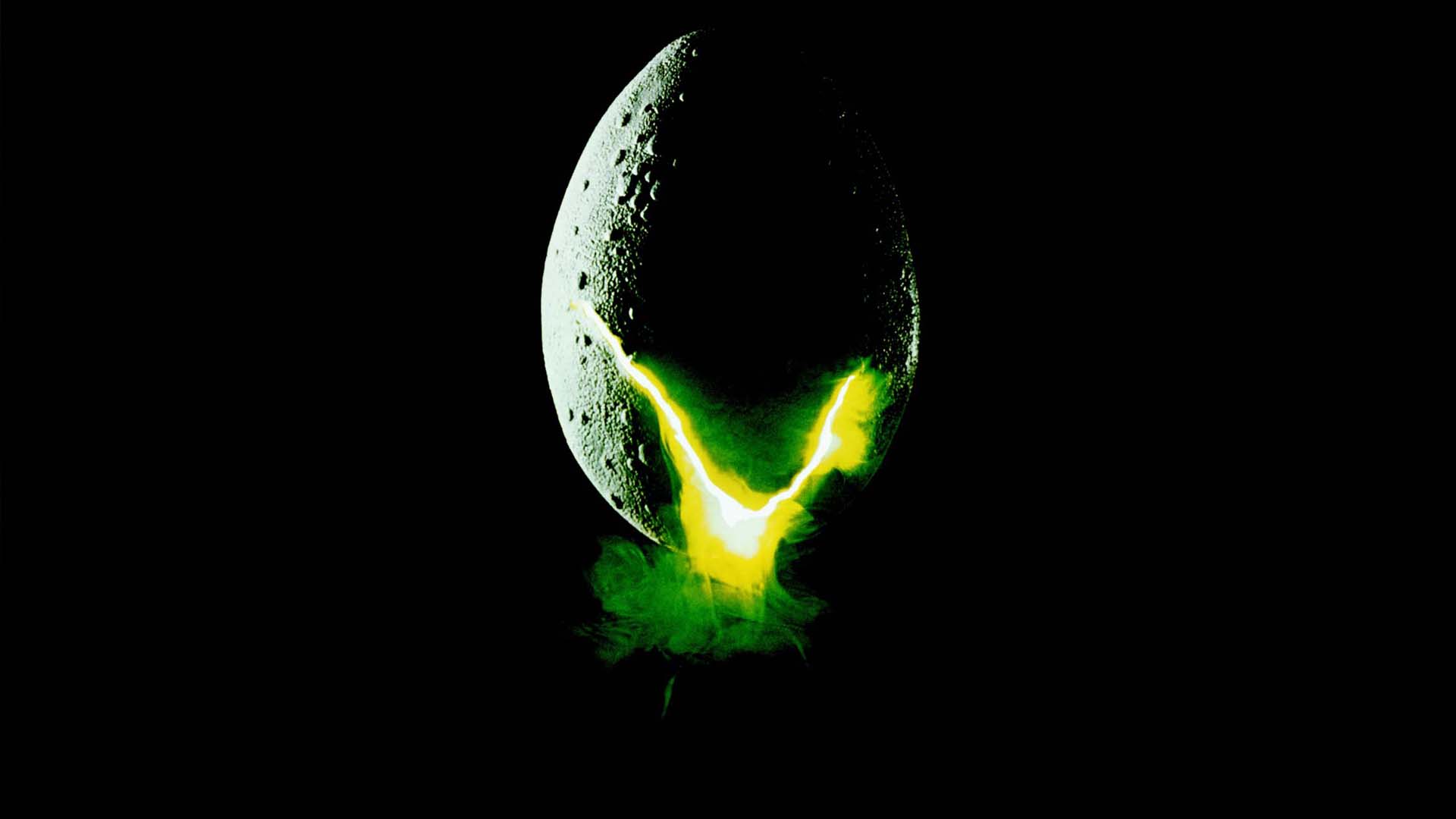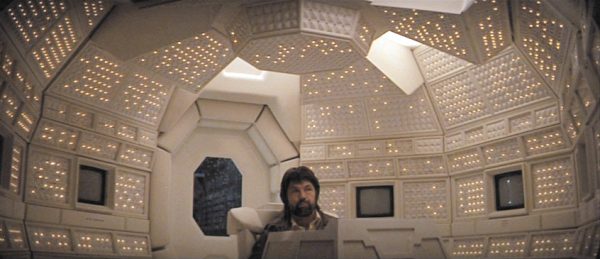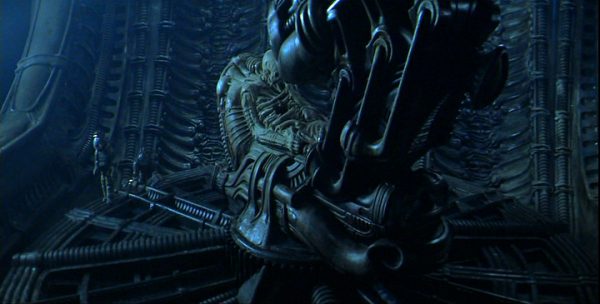
For its 40th anniversary, Film Editor Matt Taylor revisits Ridley Scott’s Alien, finding it to be a singular masterclass in suspense and horror all these years later
The legacy of Ridley Scott’s seminal sci-fi/horror classic Alien is extremely mixed. It spawned three follow-ups, one of which is widely held as among the greatest sequels ever made. Additionally, it kick-started Sigourney Weaver’s acting career, providing her with her first lead role and earning her a BAFTA nod for Most Promising Newcomer, and launched Scott into the mainstream, paving the way for highly successful films such as Blade Runner, Gladiator, and The Martian. For many, however, the film’s legacy is tarnished by its own franchise. While James Cameron’s sequel Aliens is still held as the pinnacle of the sci-fi/action genre, the other films in the series leave much to be desired. David Fincher’s Alien 3 was the subject of much studio interference, while Alien Resurrection was met with divisive reviews upon its release in 1997. There were then two crossover films: Alien vs. Predator and Alien vs. Predator: Requiem, neither of which sat well with fans or critics, and stalled the franchise until 2012.
With the turn of the new decade, Ridley Scott finally managed to get his planned sequels off the ground. The first of these, Prometheus, was a big-budget sci-fi with huge ideas, but it ultimately fell short of being an actual Alien film. Scott tried to rectify this with 2017’s Alien: Covenant, but, despite a promising teaser poster, much of the final product fell flat. It seems a shame that Fox opted to take Scott’s movies forward, rather than giving a voice to cult sci-fi director Neill Blomkamp (District 9, Chappie), who pitched a sequel to Aliens that was set to ignore the third and fourth films, and focus again on Ripley and Hicks. In May 2017, Scott announced that the film was dead in the water. Scott had taken its title, Alien: Awakening, for use in his Covenant sequel, which has since been put on indefinite hold. The latest update on the franchise came in February 2019, when James Cameron announced that he was working on getting Blomkamp’s film off the ground again.

The politics and false starts surrounding the Alien franchise has, for many, taken away the impact of that initial film. I include myself in this category; I saw the original once, years ago, in a hotel room on a school trip. It was hardly the best viewing experience. I have since seen Aliens, Prometheus, and Covenant, but my lack of enjoyment of Covenant stalled my interest in the franchise – until the other night. Alien celebrates its 40th anniversary this year, and with it comes not only a 4K Blu-ray release, but a very limited theatrical run. I was fully prepared to drop the £24.99 Zavvi were asking for the 4K steelbook until I noticed the cinematic re-release. With the awareness that a cinema viewing is the best way to enjoy a film such as this, I booked a ticket, thinking I’d be able to at least have a good time with it. Despite the fact that I’d already seen it, I was blown away by how unprepared I was the second time around. Even 40 years later, it is plain to see why Alien has endured this long: it is an exercise in suspense, a schooling in horror, and among the most terrifying cinematic experiences you may ever have.
It is an exercise in suspense, a schooling in horror
But let’s wind things back first; if you’re unaware of the original film and its story, allow me to break it down for you. The setting is the commercial tow-ship Nostromo, on its return voyage to Earth. The ship’s computer intercepts a distress signal from a nearby moon, and awakens the crew from hibernation to investigate. Once there, the crew discovers and brings aboard an alien life form, in a decision that quickly turns deadly when the organism grows into the most efficient killing machine known to man.
Among other things, Alien has become recognisable for its iconic tagline: ‘in space, no one can hear you scream’. It’s a tagline that speaks to one of the film’s greatest strengths – its intense feeling of claustrophobia and isolation. This is something that is made very clear to us through the film’s set design and cinematography; the sequence in which the xenomorph stalks Dallas in the air vents is one of the film’s best, and the climactic scene in the shuttle also plays on this idea of isolation. The vents sequence especially is extremely closely shot, much of the frame filled with the walls of the vents in which both Dallas and the audience are trapped, with the glow from his flamethrower being the only glimmer of light in the tunnel. Our uncertainty, coupled with Lambert’s increasing panic over the alien’s unknown location, ramps up the tension, only for it to be peaked in a perfectly executed jump scare. The scenes charting the detonation countdown are also among the best; the shaky cam technique is put to perfect use as we race after Ripley in the dark hallways of the Nostromo, again unsure of the alien’s whereabouts. These are now-iconic scenes and feelings that have been copied since, but never improved.

Of course, much credit must also be given to H. R. Giger’s gorgeously terrifying creature designs, and Scott’s perfect use of them. The alien takes three distinct forms over the course of the film; the facehugger, the chestburster, and the final xenomorph. Each of these is beautifully distinct and equally horrifying. The scene in which Kane (John Hurt) is initially attacked by the facehugger is a perfect example of slow-burn tension in sci-fi: Kane’s torch shines on the translucent egg as we see the currently-unknown creature’s movements (achieved through Scott wearing the prosthetic as a glove); the egg opens slowly with a terrifying creaking sound; Kane peers over the top of the egg in a shot just long enough to scare us; then, without warning, the facehugger leaps out at Kane, a sudden and unexpected movement catches us perfectly off guard. Even now, in a time when jump scares have taken all the fun out of horror, Scott executes them so perfectly that they scare us to our very cores without question.
Scott executes [jump scares] so perfectly that they scare us to our very cores without question
The chestburster scene also works in this way. It’s quicker, but just as terrifying, and the reveal of the creature is beautifully executed. It’s also helped along by the terrific performances of the cast, who were famously unaware of the amount of fake blood the scene would involve. Tom Skerritt (Dallas) noted in an interview that Veronica Cartwright’s (Lambert) reaction is totally genuine, as she had no idea that a squib would shoot blood right at her. The scene itself is now among the most iconic of all time, and rightly so; even more so than with the facehugger scene, this is a perfect example of sci-fi body horror. It lulls us into an extremely false sense of security, before surprising us in the worst and therefore best way possible, with one of the most grotesque creatures we have ever encountered in all of horror.
It is, however, the final xenomorph that gets the most screen time, and rightly so. Giger’s design for the creature is genuinely the stuff of nightmares. Imposing and slimy, the xenomorph is among the most iconic movie monsters to ever grace the silver screen. It is still petrifying to this day, thanks in part to its physicality. Bolaji Badejo plays the xenomorph in a costume specifically made to fit his 6’10’’ frame, but rarely gets to be seen entirely on screen. This is a decision that turns out to be ultimately for the better, and basically created the now age-old rule among horror movies of ‘don’t show your monster too much or too soon’. It’s a rule that many horror films in the four decades since Alien have broken, and it’s almost always been to the detriment of the overall movie. Alien’s inception of and sticking to this rule goes a long way in ensuring it has survived as long as it has.
Every single one of the cast gives their all, no matter how much screen time they may have
Alas, no proper horror movie is a hit without solid performances. Most recent horrors that have been above par in some way have been bolstered by a lead or leads that the audience can relate to, and sympathise with. Alien gives us Sigourney Weaver in her breakout role as Ellen Ripley, the Nostromo’s warrant officer. Ripley is calm, persistent, and by the book – traits which are massively put to the test over the course of the film. Her power dynamic with her fellow officers (particularly Ian Holm’s Ash) is always on edge, as, though she is superior to many of them, not everyone is in the mood to listen once the bodies start dropping. Even aside from Weaver, every single one of the cast gives their all, no matter how much screen time they may have. Alongside her are the previously mentioned Hurt, Skerritt, Cartwright, and Holm, as well as Yaphet Kotto and Harry Dean Stanton. Every single one of them is perfect in their roles, making us instantly believe in them both as individuals and as a unit, no matter how much impact or development they have. Stanton and Kotto are particularly brilliant as engineering duo Brett and Parker – the bond between the two is instantly believable, and they bring the film a good amount of levity and smiles before everyone starts dying. Hurt’s performance as Kane earned him a BAFTA nomination for Best Supporting actor; Skerritt imbues Dallas with a very real sense of authority; Holm is perfect as Ash, always leaving us unsure and wary of him; and Cartwright, whose Lambert sadly does little of consequence, acts as a surrogate for the audience, giving us a vessel through which to voice our fears to the characters. Each actor is fantastic in their own right, and their chemistry together makes them even more believable as a team. It seems reasonable to say that without such a good cast to ground the rest of the film, Alien may not have endured as long as it has.
Without a single one of its parts, Alien would surely not have had the legacy it does today
While that is admittedly a very general comment to make, it also seems fair. Without a single one of its parts, Alien would surely not have had the legacy it does today. In the hands of a poorer director, or if it hadn’t had Giger’s amazing designs, or if it had shown the creature too much, or if it hadn’t had Jerry Goldsmith composing his perfectly eerie score, or with a bad cast, or a bad script, or a different setting – it is extremely hard to pinpoint a single thing that makes Alien so good, because without even one of them, it surely would have failed – or, at the very least, not been as successful as it was. It seems cliché at this point to say so, but Alien is fully deserving of its praise, and is easily among the greatest horror films of our times.
Verdict:
Ridley Scott’s classic horror is as terrifying in 2019 as it was in 1979. If you haven’t yet seen it, treat yourself to the new disc release. If you have seen it, buy it anyway. Despite the messiness of the franchise that followed, the original remains the best – and it’s sure to shake you to your core.
10/10
Alien: 40th Anniversary Edition is available now on Blu-ray and 4K UHD.

Comments